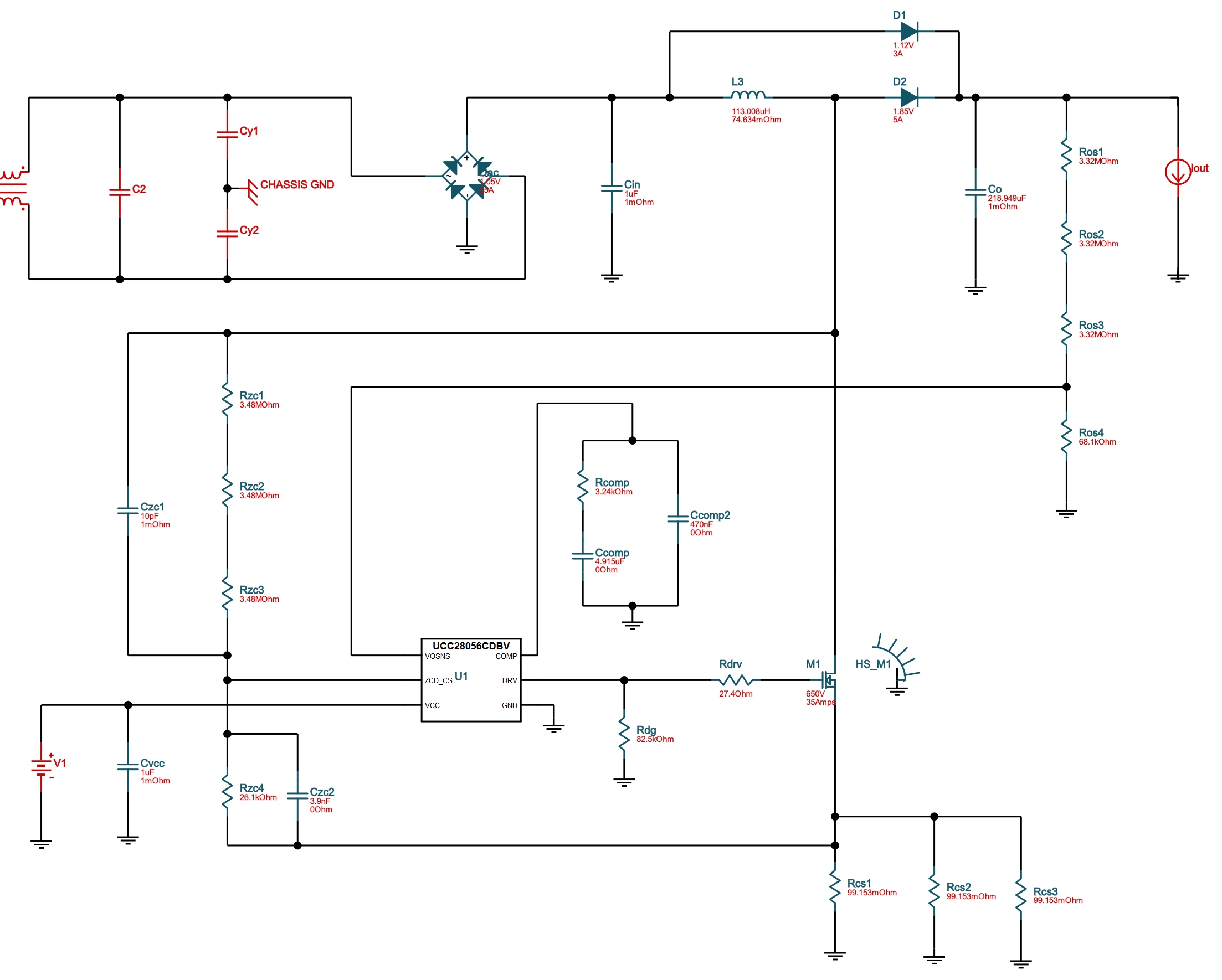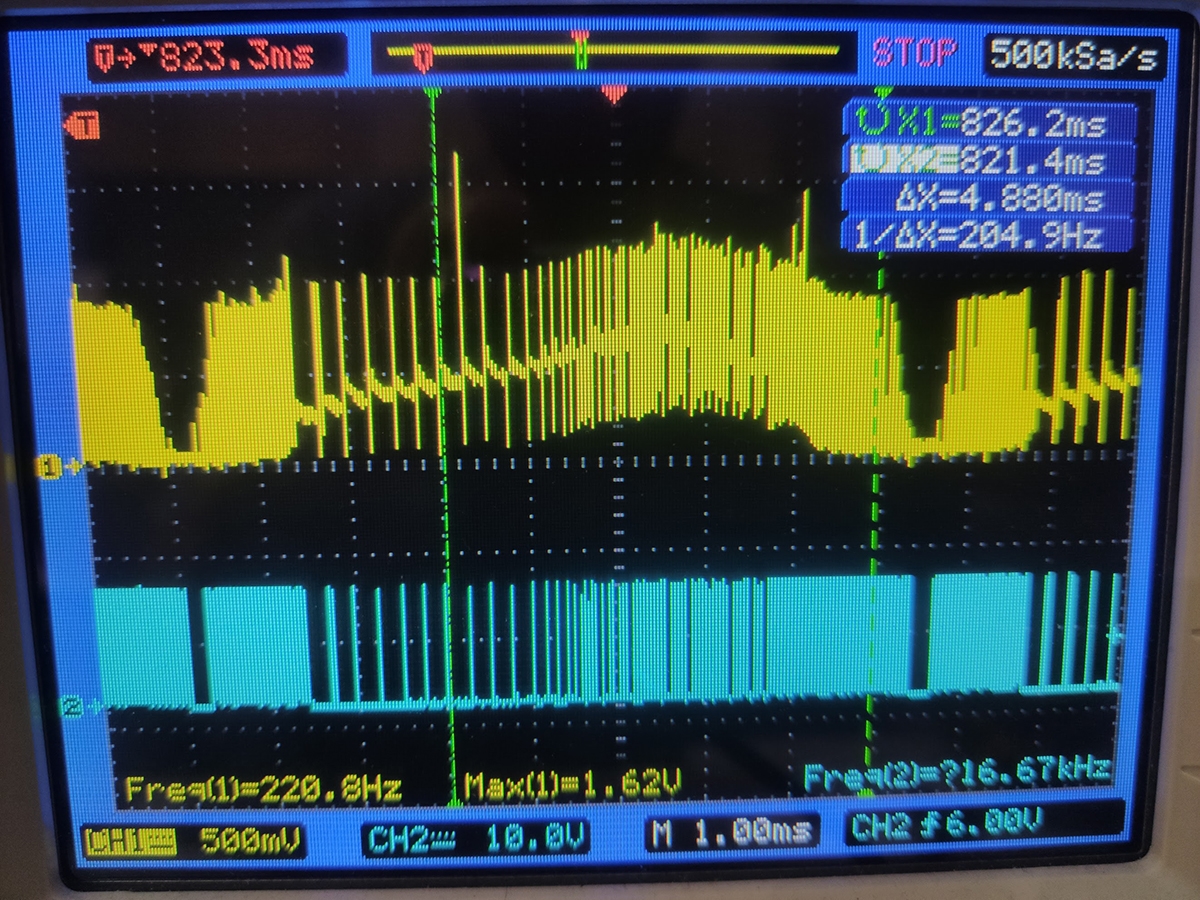I have modified a circuit to use the UCC28056. When I apply a 120VAC signal, the output does boost and gets to about 340V (set to 390V) but with almost no power. If I draw a constant 5W load, the output bounces around from 280V to 340V. 10W makes it drop to 100V, it is just all over the place.
Looking at the ZDC waveform on the scope it appears to be too high. I am uisng essentially default values, trying to get the circuit operating before I tune it. 10Mohm with 10pF parallel from the FET drain to ZDC and then 26.1KOhm with 3.9nF in parallel from ZDC to FET Source / Current Sense resistor. It appears that a voltage over 500mV will cause the part to go into an OC #1 fault, and over 750mV will cause the part to go into an OC #2 fault. I believe I am getting OC #2 fault. I see 700mV to 800mV on the ZDC signal. It also follows a half-wave sine shape of 60Hz which makes it go up almost 600mV. Using the default circuit I did not expect to debug it and again without a real simulation environment like SPICE I am left probing the actual board to learn what is going on which makes this tedious.
What's going on, and is this the correct path to go down, trying to correct this ZDC waveform?





